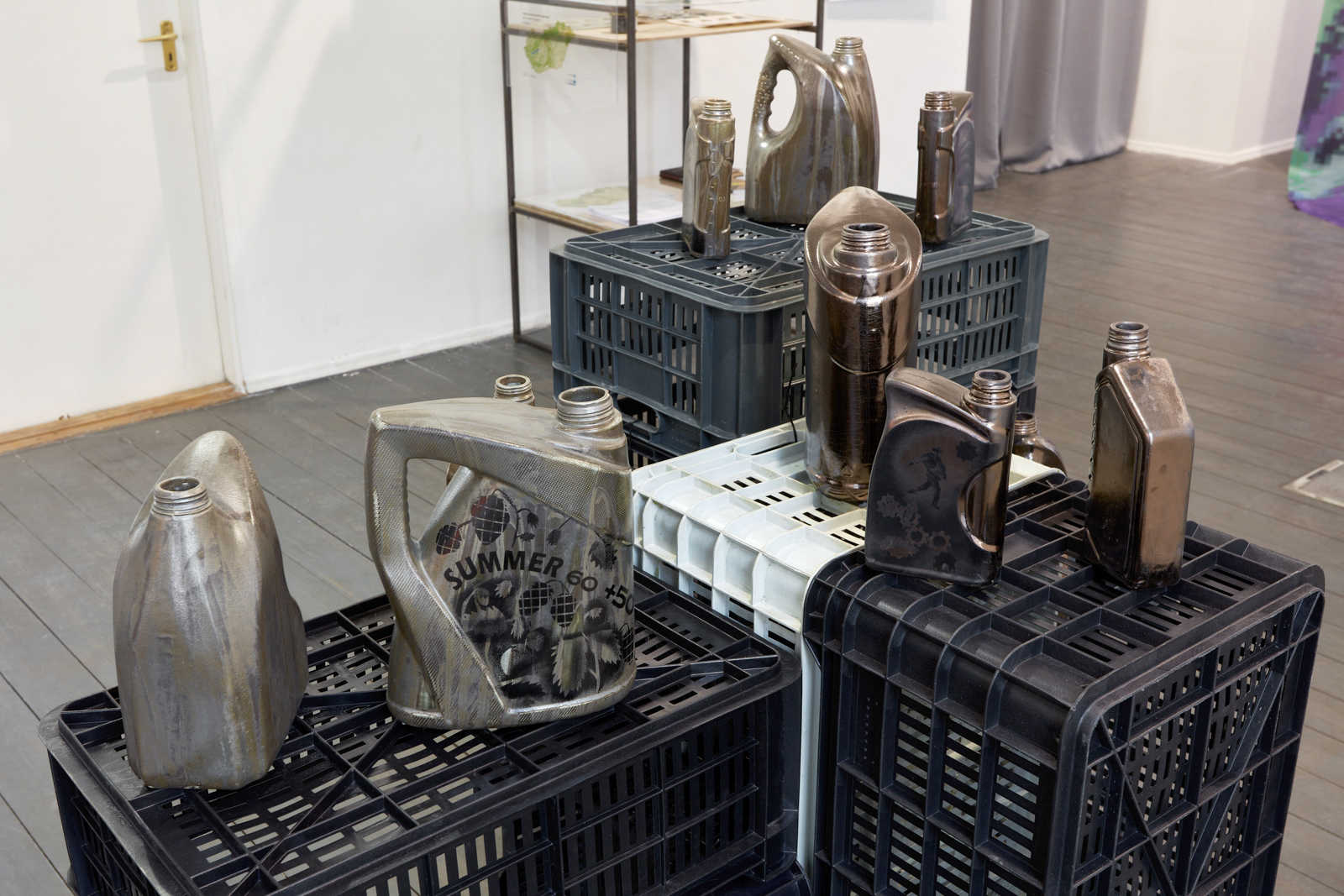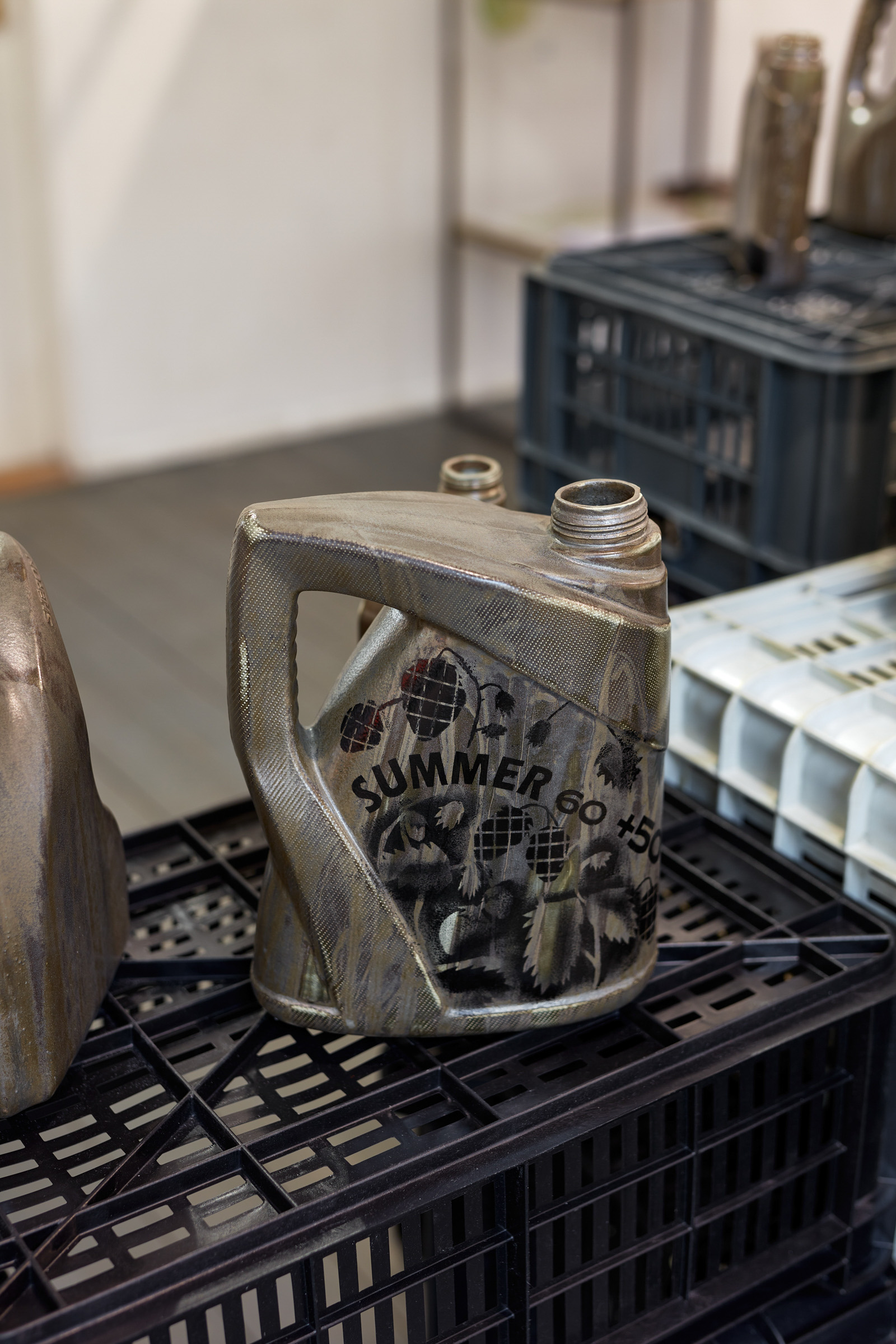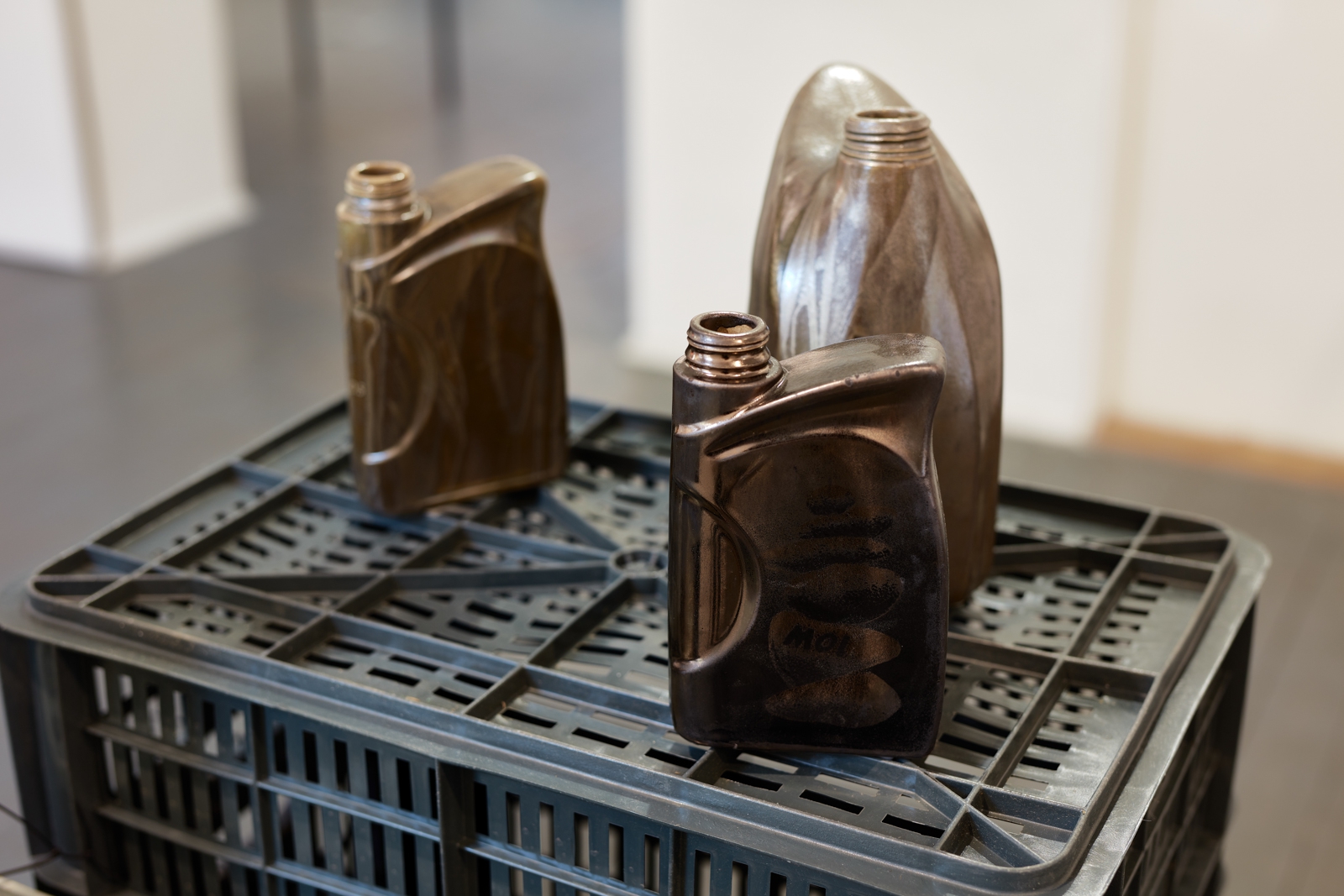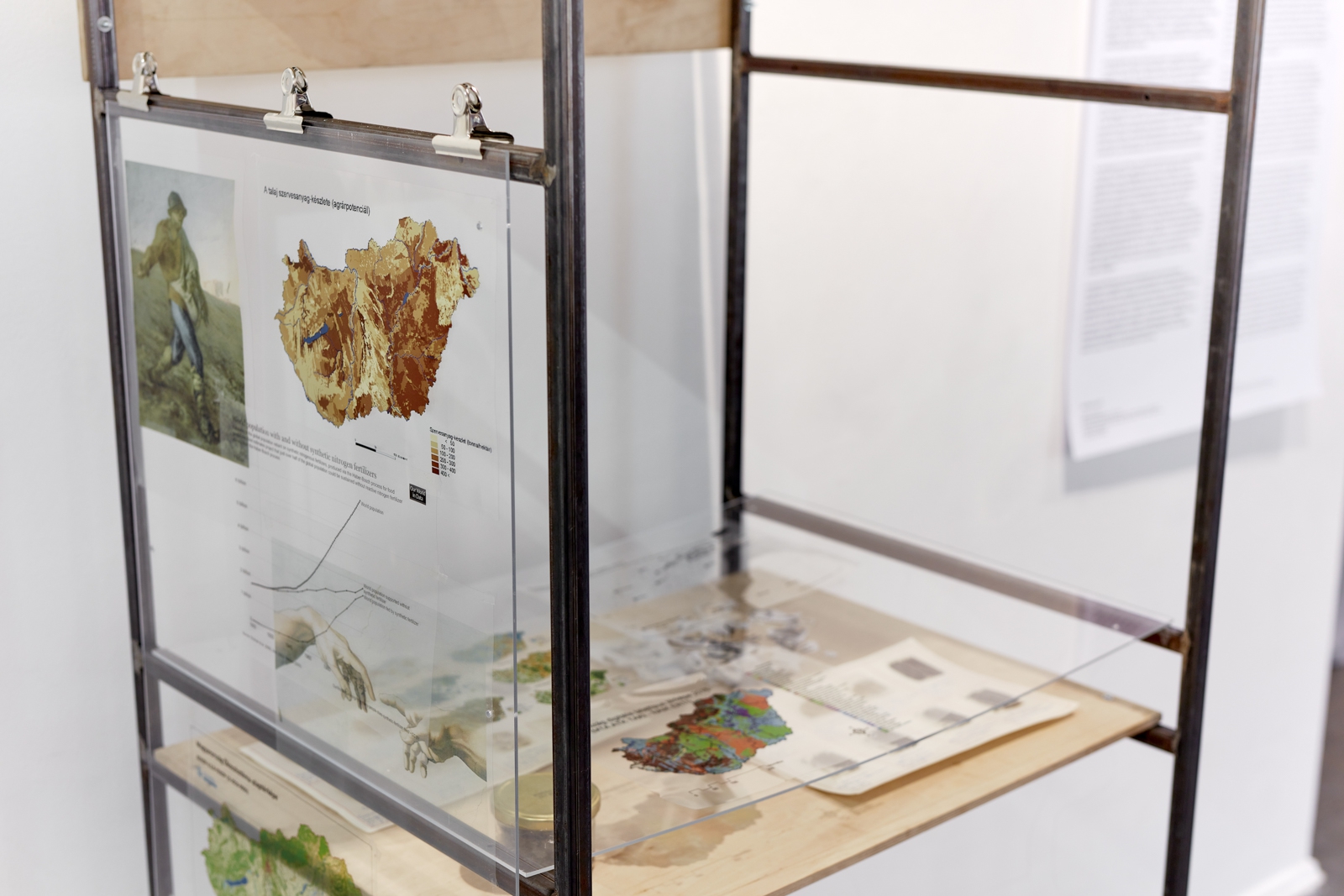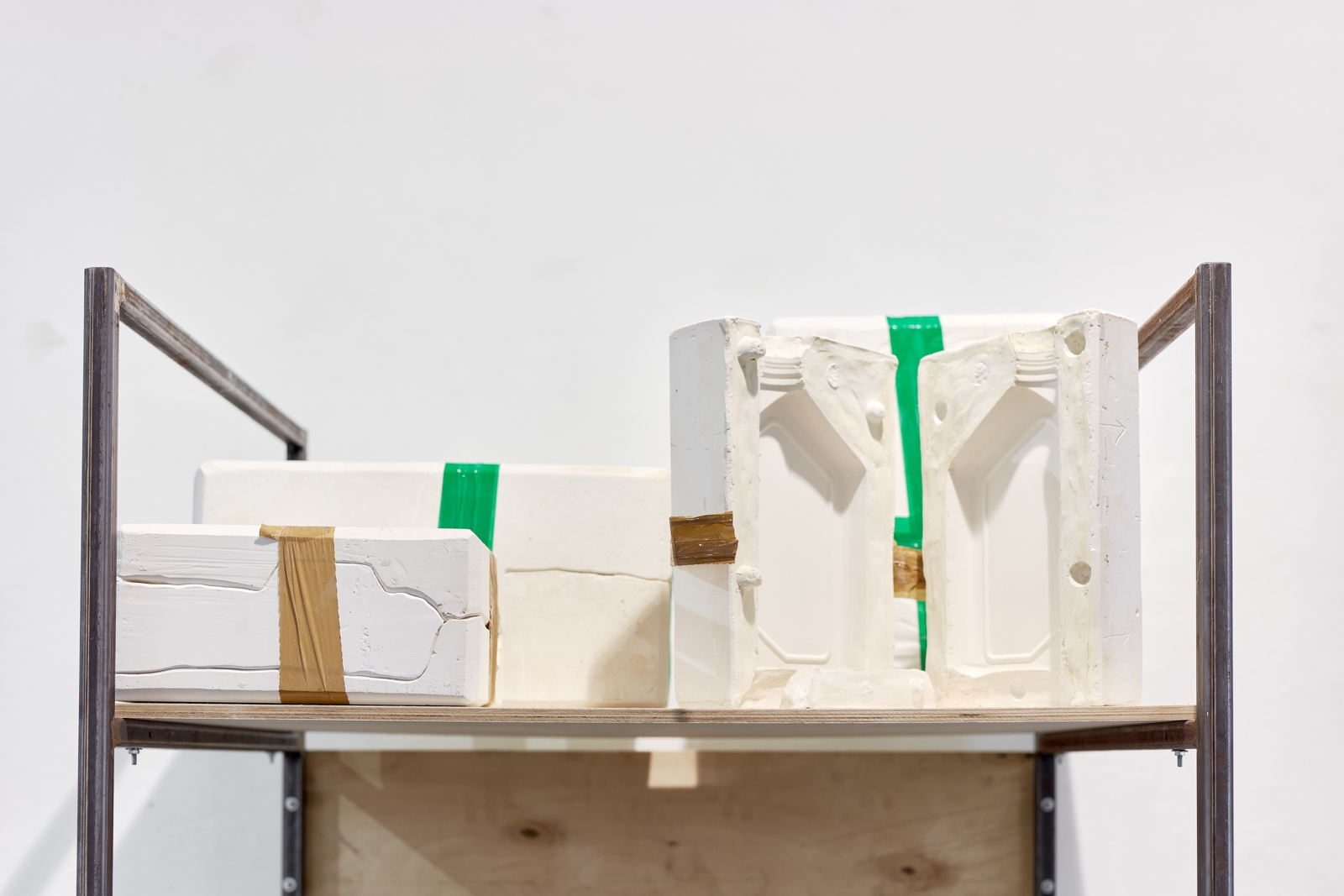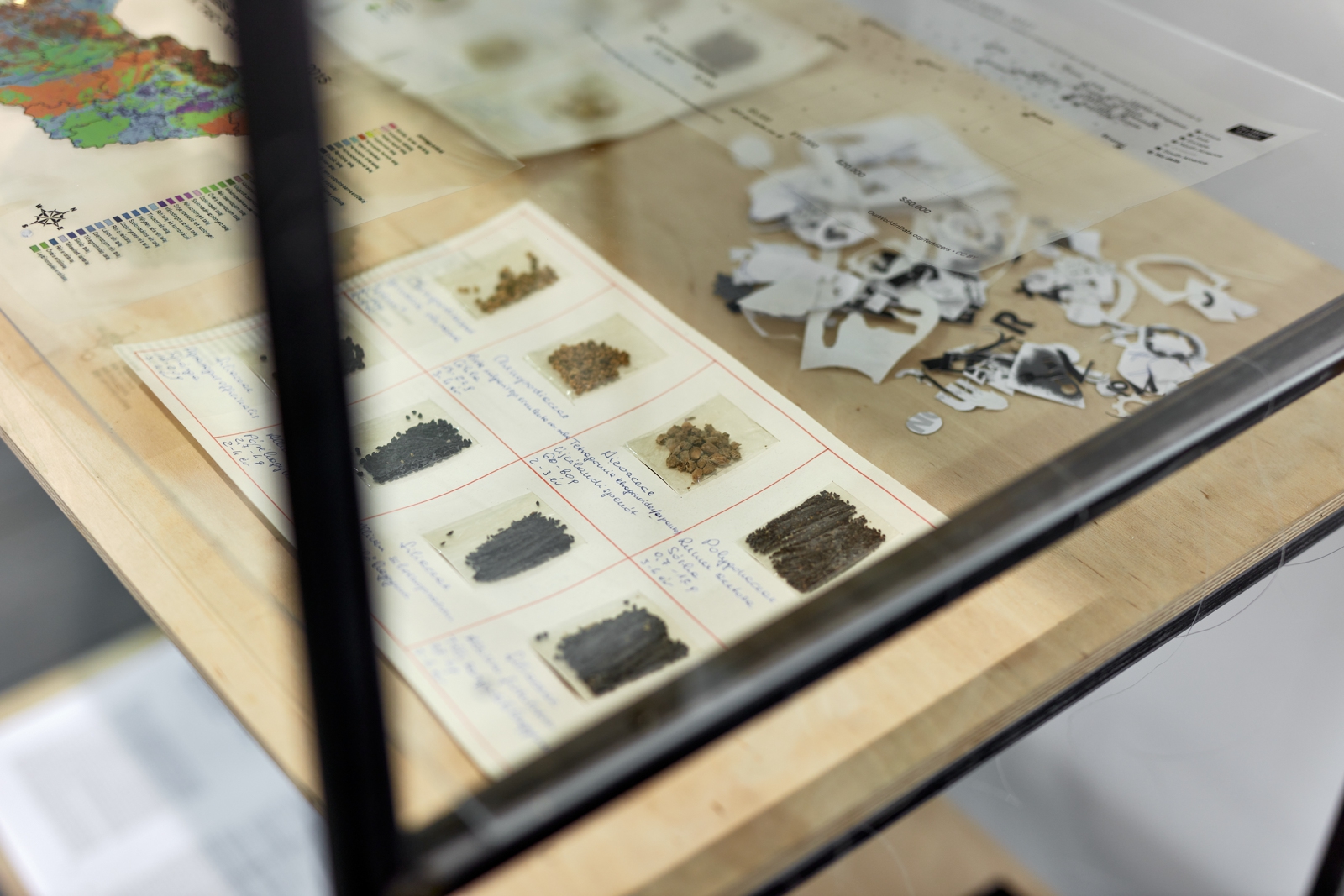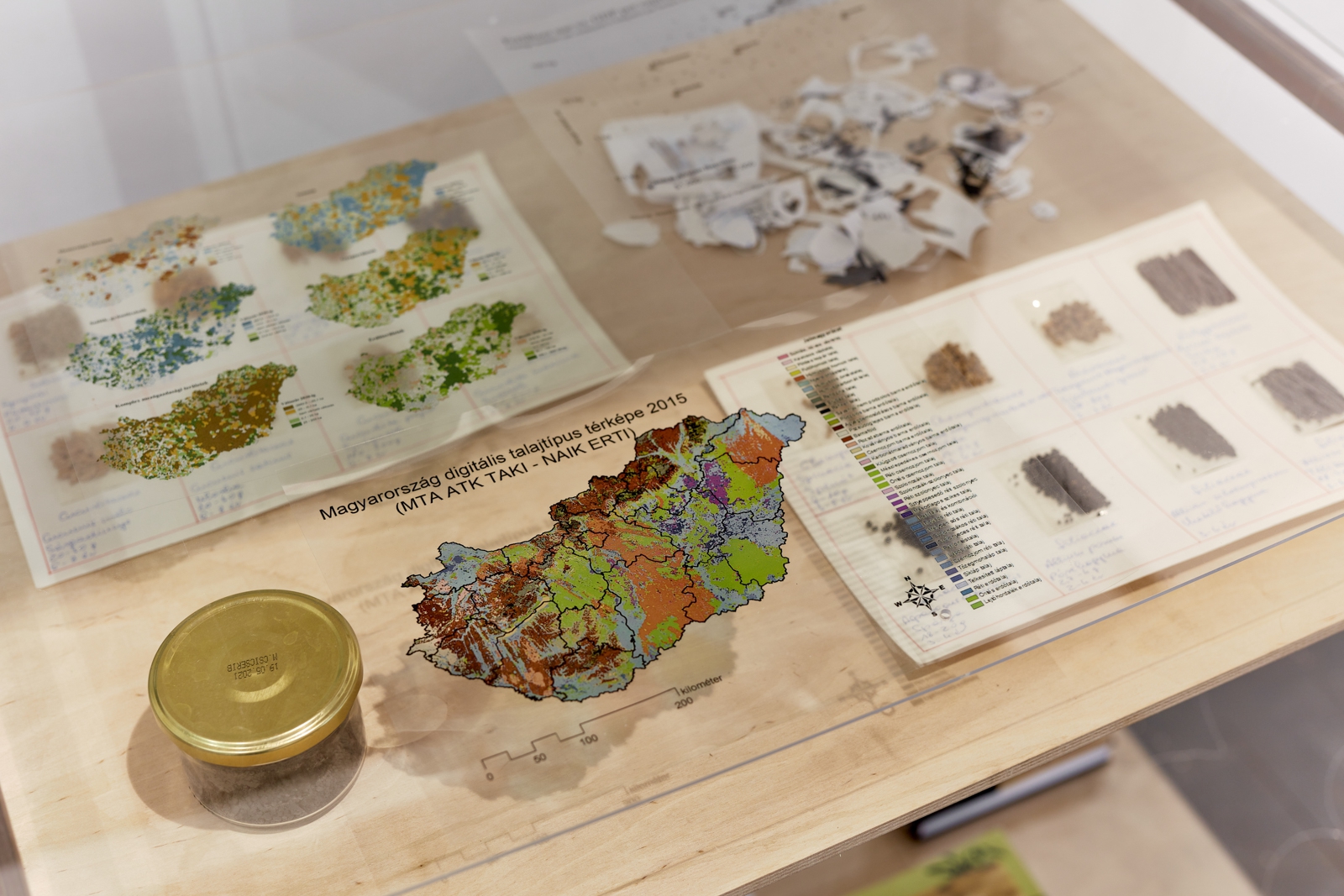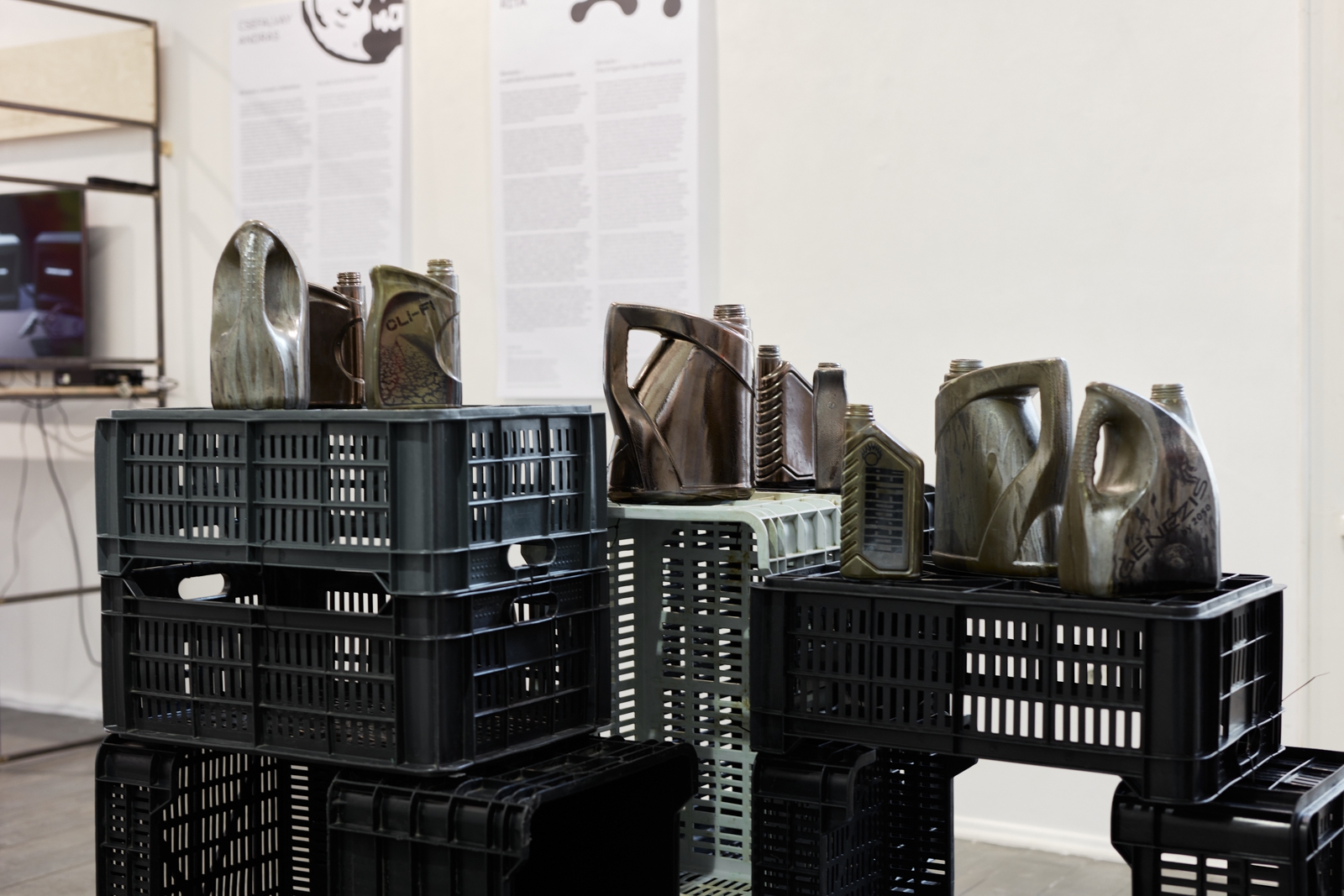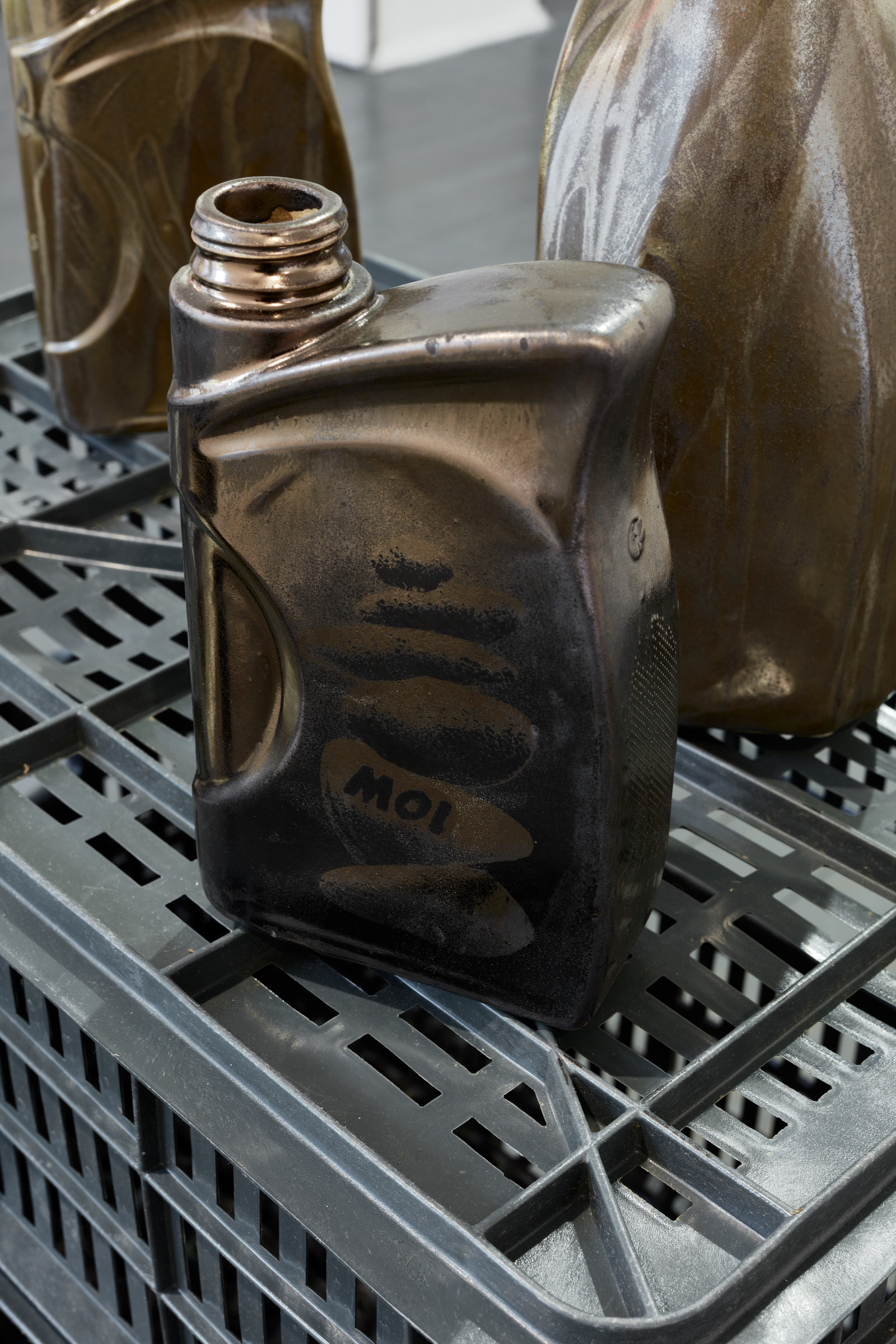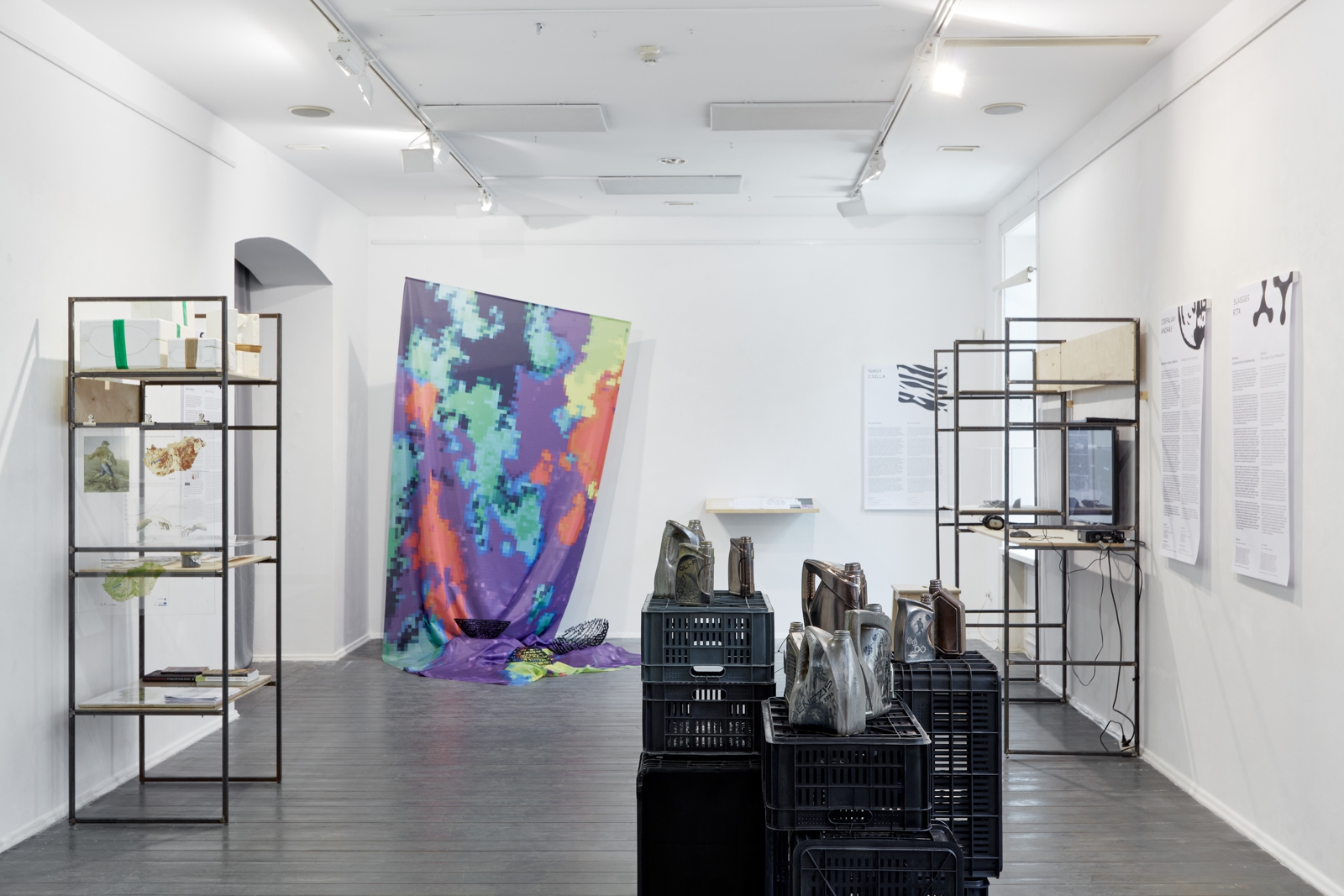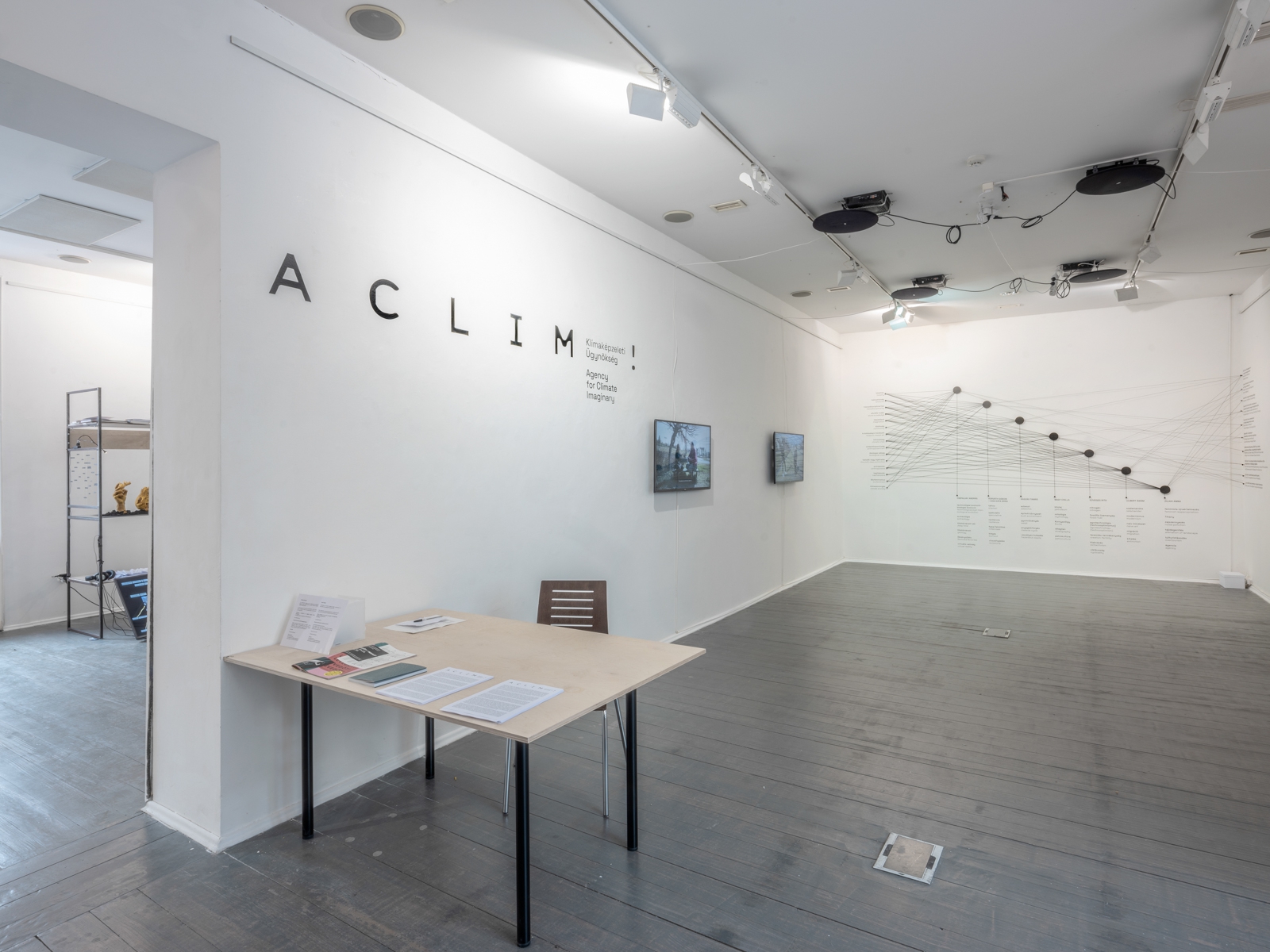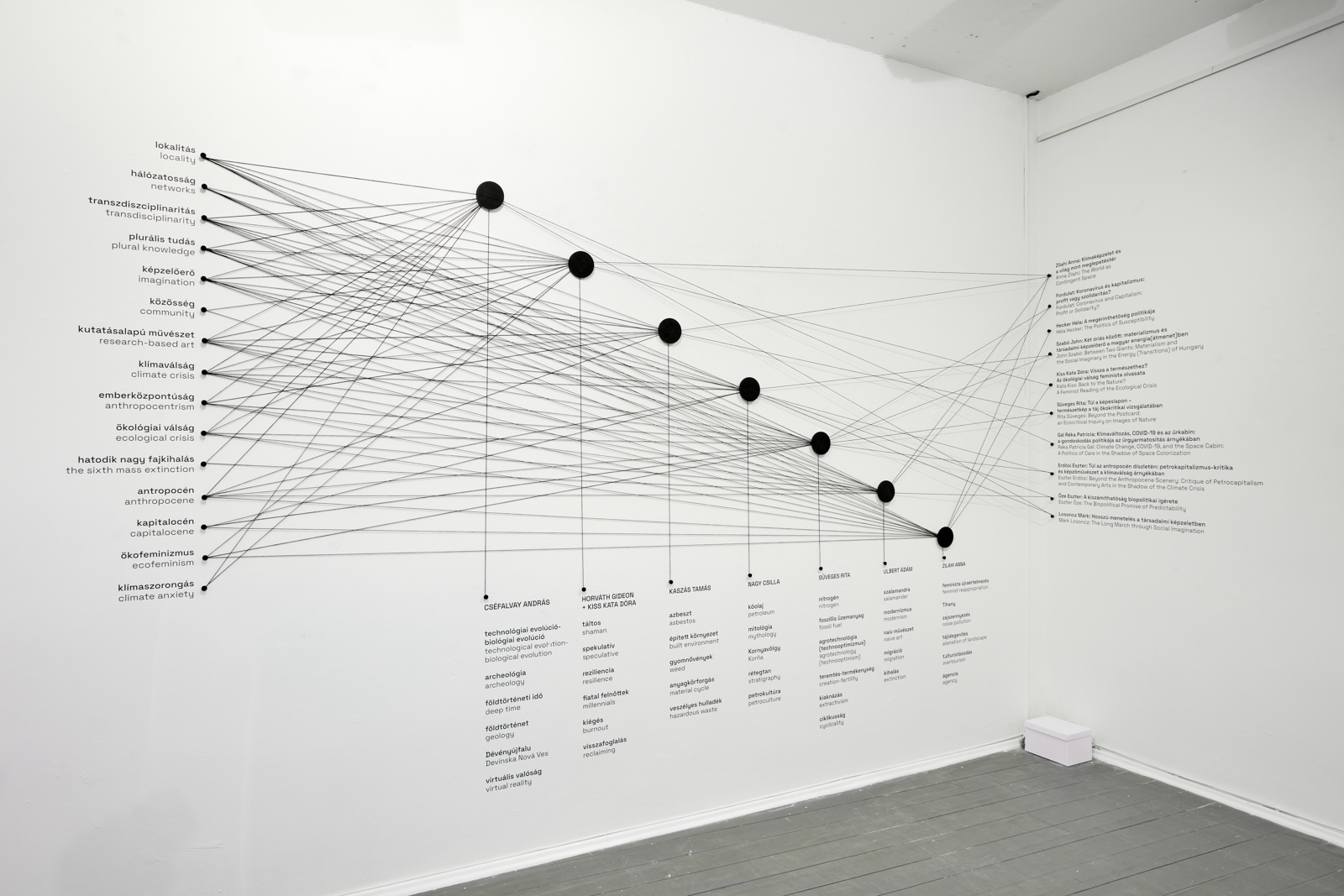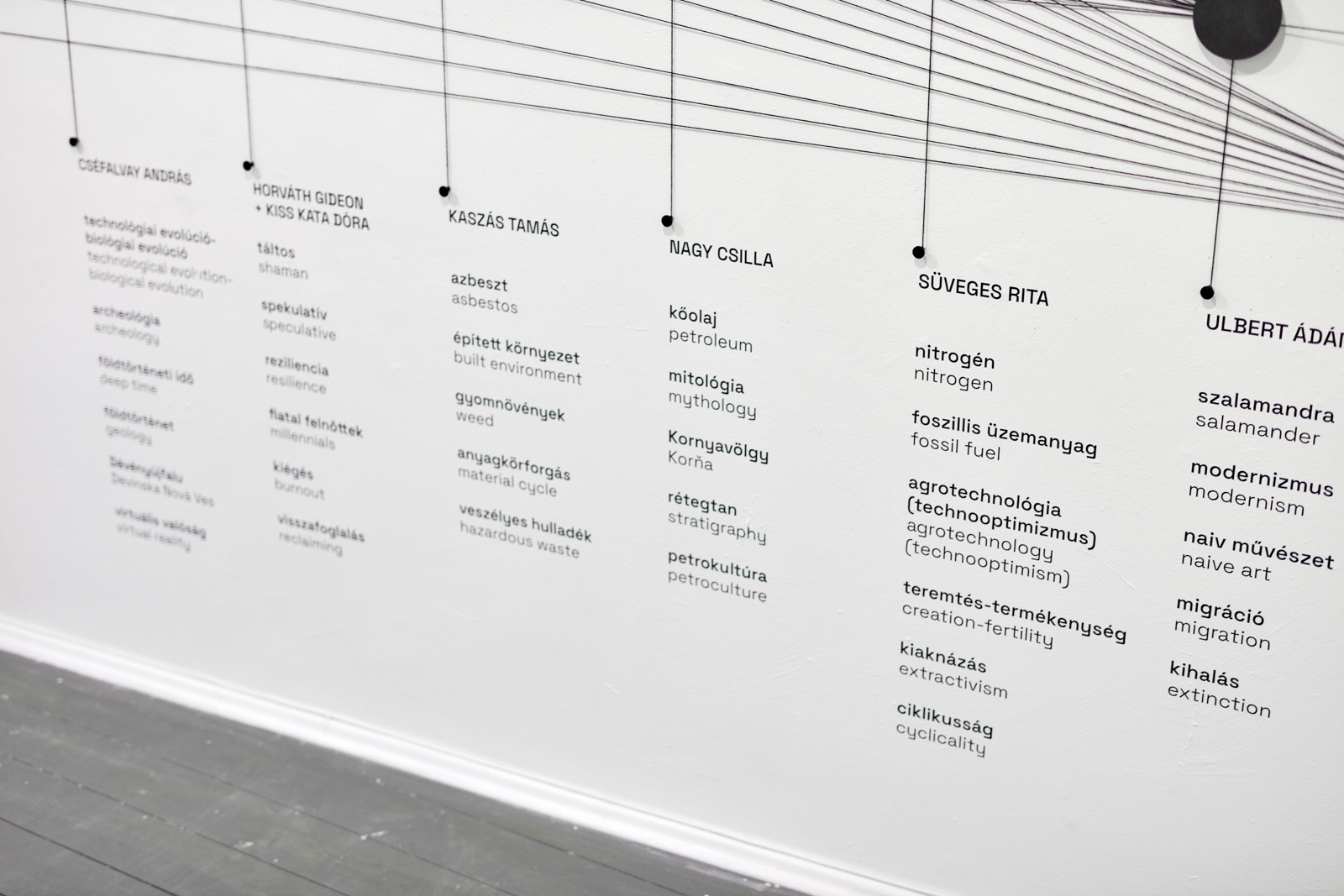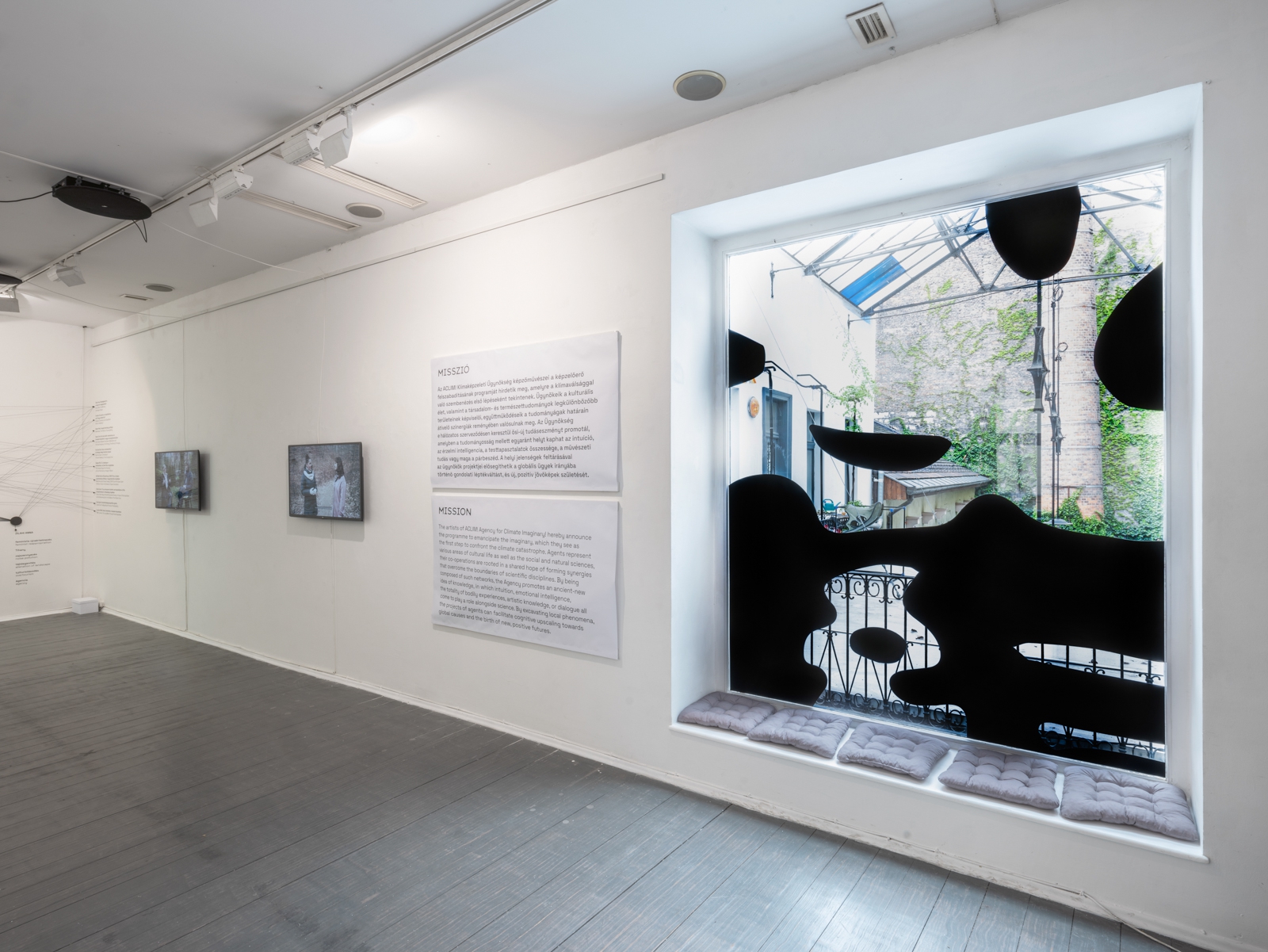Rita Süveges is intrigued by the changing conception of nature; that is, how different eras relate to nature. Defining a landscape is the organising principle of her artistic practice, an endeavour she undertakes by utilising ecocritical perspectives. Süveges continues her research by developing a critique of the techno-optimism that has been formative of life in the 21st century, which she does by focusing on agricultural practices in her installations within the framework of ACLIM!.
On the sixth day of the Creation, God called upon man to rule over living beings. This biblical path to rule the Earth has spurred the climate catastrophe, as man has perfected the exploitation of nature. Genesis [Genezis] does not only refer to the world’s creation in the Christian tradition, but it is also the brand name of Hungary’s leading group of agricultural products, including fertilisers and insecticides produced in Pétfürdő. Although, it destroys agricultural land and pollutes waters, fertilising underpins the nutrition made available for half of the Globe’s population. Of course, this could be done differently. We, however, expect technology to create and to solve its self-induced problems as well.
The dominant worldview since the Enlightenment has suggested that the precariousness of humankind would be overcome by civilisation and continuous development. Technological innovation is the engine of this process. However, the ecological and climate catastrophe has highlighted that this is not without its problems. Development is always underpinned by the interests of certain social groups; costs, however, fall upon the entirety of society and nature. A techno-optimist approach expects the environmental catastrophe to be resolved by technology as opposed to essential social change. In Genezis – the Irrigation Can of Petroculture, Süveges explores agriculture’s technological obsession and unsustainable practices – destructive for both society and the environment.
The agricultural scene came to be dominated by large conglomerates following World War II. According to a 2017 IPCC (Intergovernmental Panel on Climate Change) report, intensive agriculture, forestry, and land-use contributed to 25% of global greenhouse gases, with the fossil fuel-based industry playing a hand in glove role with large-scale agricultural production. In her work, Süveges focuses on how industrial agriculture’s yield-increasing technologies (e.g. use of fertilisers, automation, or chemical pesticides) risk the destruction of productive land and local ecosystems. She also directs her attention towards how social relations are prefigured and shaped by these practices.
Süveges has exhibited ceramic jugs in the framework of ACLIM!. The jugs borrow their aerodynamic forms from motor oil bottles; on these, she substitutes the usual logos for drawings that highlight the compulsiveness of agricultural technologies. Techno-optimism is equally woven through all facets of our lives ranging from the comfort of buffed hobby sport utility vehicles to hydroculture-produced baby spinach. This is reflected in the masculine aesthetic of bottles that convey acceleration, mechanical power, and the aggression of impetus. In Süveges’ work, jugs shift from simply being containers to emblems of a petroculture.
Boom/Doom, 10 x 22 x 6 cm, glazed ceramics, porcelain paint, 2021
CO2 Booster, 10 x 22 x 6 cm, glazed ceramics, porcelain paint, 2021
MOL stones, 12 x 19 x 5 cm, glazed ceramics, porcelain paint, 2021
Cli-fi, 12 x 19 x 5 cm, glazed ceramics, porcelain paint, 2021
The Sower, 12 x 19 x 5 cm, glazed ceramics, porcelain paint, 2021
Genezis, 17 x 25 x 14 cm, glazed ceramics, porcelain paint, 2021
Monoculture, 17 x 25 x 14 cm, glazed ceramics, porcelain paint, 2021
Sweet Garden, 17 x 25 x 14 cm, glazed ceramics, porcelain paint, 2021
Summer 50+60, 22 x 29 x 12 cm, glazed ceramics, porcelain paint, 2021
Csányiland, 22 x 29 x 12 cm, glazed ceramics, porcelain paint, 2021
*The ceramics were made with the contribution of Lakatos Ábel, ceramic artist.
